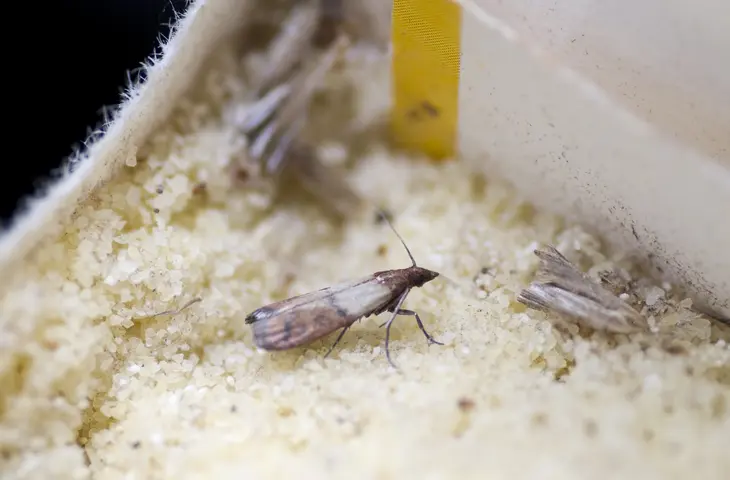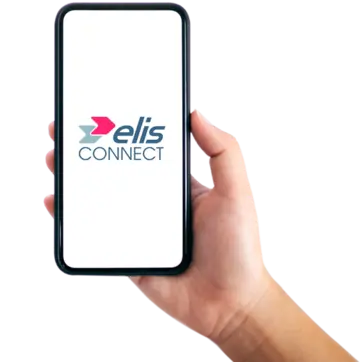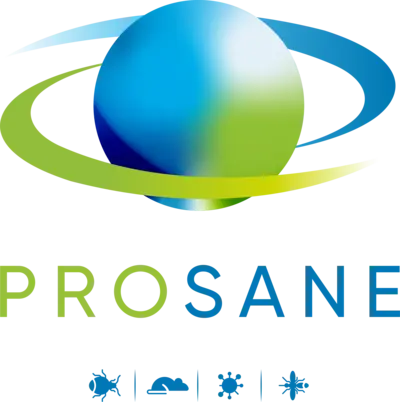
Elis Pest Control service includes:
-
Audit of your premises and summary of facilities
-
Traceability of all our interventions
-
Targeted on-site implementation + HACCP file
-
Control and changing of biocides
-
Advice and recommendations
-
Curative intervention in case of infestation
-
Treatment report sent automatically
Food moths
The food moth has a complete metamorphosis (egg, larva, chrysalis, adult). The adult food moth has a globular head and looks like a small butterfly. The larvae of the food moth weave silk nests in which they spend part of their lives and molt. At the end of their growth, they begin their transformation into butterflies which lasts 1 to 2 weeks. At 30°C, a generation develops and reproduces in about a month. At 10°C, it takes 7 months. They can hibernate during the harsh months.
They can destroy your merchandise and threaten the hygiene and image of your facility.
En savoir plus sur la mite alimentaire
Quelle est la différence avec la mite du textile ?
La différence majeure entre ces 2 mites est le régime alimentaire. La mite du textile se nourrit de kératine et de protéine présente dans les poils des animaux, principalement de la laine, de la fourrure et des plumes.
La deuxième différence est la taille : elle est beaucoup plus petite, mesurant de 6 à 8 mm de long et est de couleur crème / beige.
Les nuisances de la mite
Les mites sont inoffensives, cependant, elles laissent derrière elles des excréments, des cadavres, des toiles et des restes de cocons.
Ce qui peut entraîner :
- Perte de la nourriture : les aliments humides peuvent contaminer le reste du stock, les rendant impropres à la consommation, ce qui mène à la perte de biens non vendus.
- Réactions allergiques : les excréments et les poils peuvent provoquer des éruptions cutanées, des démangeaisons et des problèmes respiratoires.
Comment éviter une infestation ?
Les mites alimentaires peuvent être transportées par l’intermédiaire des produits achetés. Il suffit qu’une larve ou un cocon se trouve à l’intérieur ou à l’extérieur du paquet pour provoquer une infestation.
Pour éviter que ces nuisibles s’installent chez vous, il est important de stocker les aliments secs dans des contenants hermétiques et de les inspecter régulièrement.
Les aliments contaminés doivent être jetés et les contenants doivent être nettoyés soigneusement pour éliminer tout résidu d'aliment qui pourrait attirer les mites.
Un service soucieux de son impact environnemental
L’impact environnemental est au cœur de nos préoccupations ; nous basons nos interventions sur la méthode de lutte intégrée est basée sur l'adoption de techniques et de solutions innovantes plus respectueuses de l’environnement.
Cela implique un diagnostic systématique de votre établissement qui permet :
- d’adapter nos prestations à votre secteur d’activité
- d’opter pour des solutions non-toxiques en fonction du nuisible ciblé
Renseignement, devis ou demande d’intervention
Elis assure une traçabilité systématique d'intervention grâce à Elis Connect

If you need information or a quote for your project, our teams are here to help. Contact us!
*Required fields
Account details










